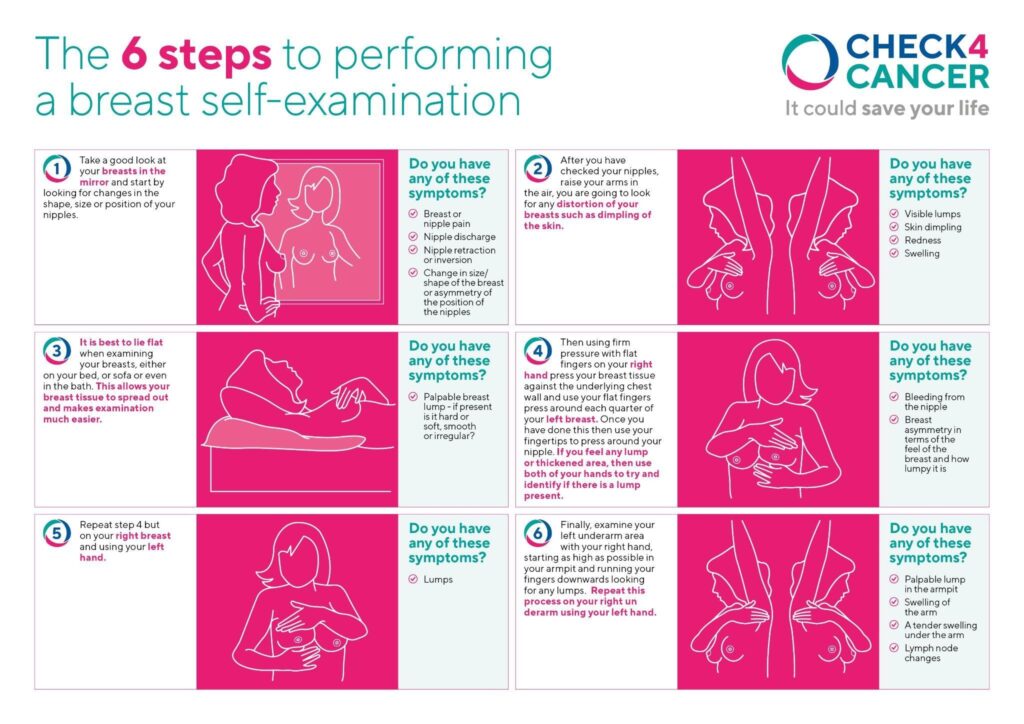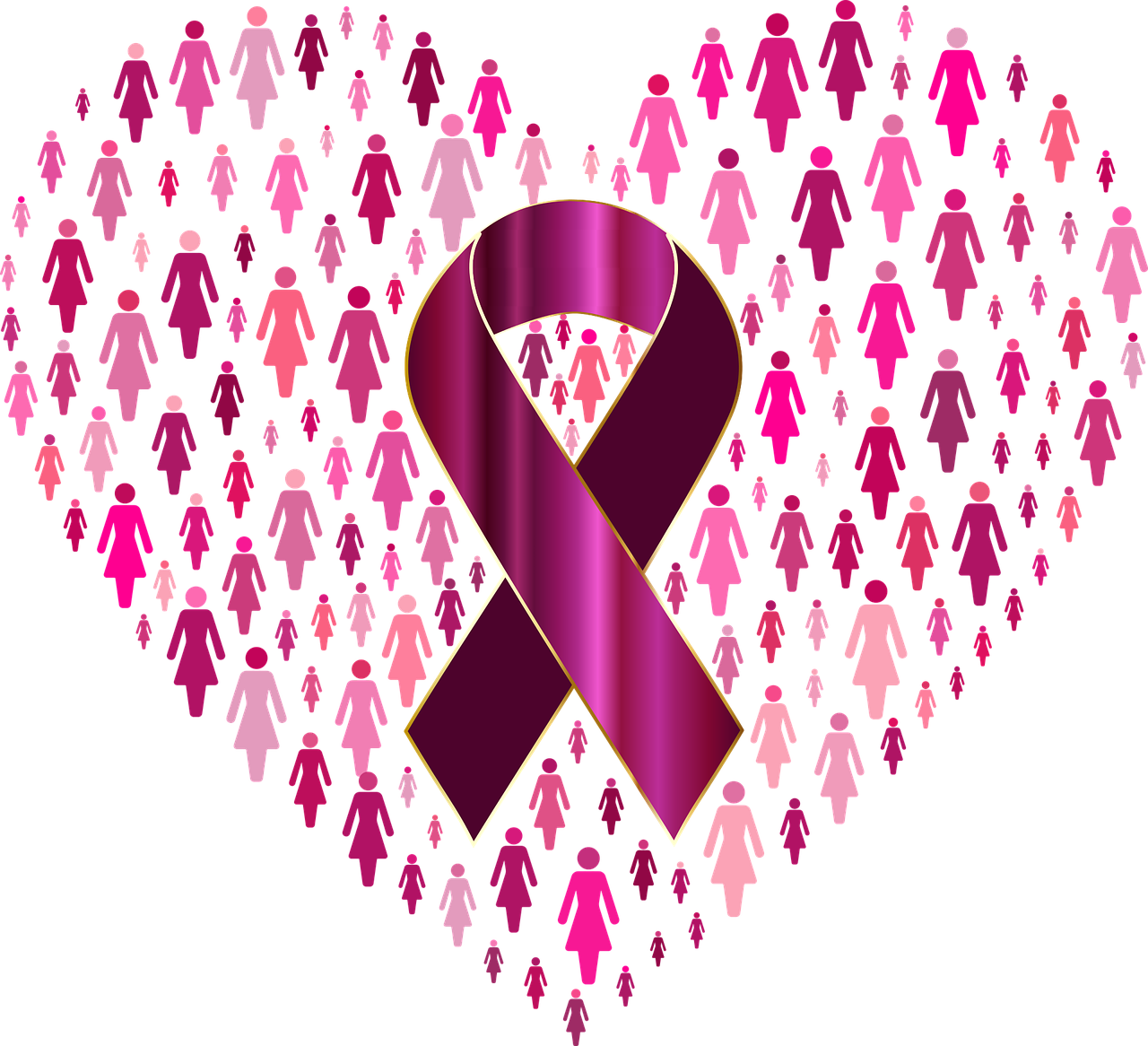Breast Cancer Awareness Month is celebrated each October to raise awareness about the dangers and problems that breast cancer poses.About 1 in 8 women are diagnosed with breast cancer during their lifetime. According to the World Health Organization (WHO), in 2020, 2.3 million women were diagnosed with breast cancer and 685,000 deaths were recorded globally because of it.
Today, breast cancer is recognised as the most prevalent cancer worldwide. It affects both men and women, although it is more common in women.
What is Breast Cancer?
Breast cancer is a condition in which cells in the breast grow uncontrollably, forming a lump or mass known as a tumour. This occurs due to a complex interplay between lifestyle, reproductive, and genetic risk factors.
Breast cancer cells begin either inside the milk ducts, the milk-producing lobules of the breast, or both. The earliest form (in situ) is not life-threatening. The cancer cells can spread into nearby breast tissue creating tumors that cause lumps or thickening.
Invasive cancers can spread to nearby lymph nodes or other organs in a process known as metastasis. Metastasis can be fatal.It is important to note that while breast cancer is heavily discussed, a breast mass can mean several other things such as a fibroadenoma, mastitis, and so on.
Who is at Risk?
Several factors can contribute to an individual’s risk of developing breast cancer. While some risk factors are beyond one’s control, others are influenced by lifestyle choices.
Risk factors that cannot be controlled include:
- Female gender
- Getting older (more in women >50 years)
- Early menarche (<12) and late menopause (>55)
- Genetic mutations
- Having dense breast
- Previous history of breast cancer or other breast diseases
- Family history of breast or ovarian cancer
Some lifestyle choices that could increase the risk of breast cancer are:
- Obesity
- Drinking alcohol
- Smoking
- Lack of physical activity
- Excessive alcohol consumption
- Having a first pregnancy >30
- Not breastfeeding
- Hormone replacement therapy
Family history makes up about 5–10% of breast cancer cases, and the majority of them are due to mutations in the BRCA1 or BRCA2 genes. The presence of these genes suggests that you might have a higher risk of developing breast cancer.
Signs and Symptoms
Recognizing breast cancer signs and symptoms is critical for early detection and effective treatment.Common signs include:
- Presence of a lump or thickening in the breast.
- Changes in the size or shape of the breast
- An unexplained pain in one or both breasts
- Nipple changes such as inversion or discharge
- Pulling in of the nipple or pain in the nipple area.
- Skin changes such as redness, flaky skin, irritation or dimpling
- Underarm lump
Even though these symptoms could also be seen in other conditions that are not breast cancer, any changes in the breast should be examined right away by the doctor in order to identify the cause and determine the most appropriate course of action.
Breast Self-Examination
A breast self-exam is a step-by-step method you can use to examine your breasts. Performing regular breast self-exams is a proactive measure that individuals can take to monitor their breast health. You can more easily identify changes in your breasts or recognize when something feels odd if you regularly examine and feel your breasts.
Women are advised to conduct these exams monthly, ideally 7-14 days after their menstrual period. For postmenopausal women, establishing a fixed day each month can promote regularity in the self-examination routine. These examinations can be done
- In front of a mirror
- Standing (like in the shower)
- Lying down
To perform a breast self-exam, you must first properly expose your breasts by removing your top and bra.

Handy Guide to Performing a Breast Self-Examination in 6 Steps. Source
In self-examination, it is important to know what to look out for. Typically, a cancerous lump in the breast:
- is a hard mass
- has irregular edges
- doesn’t move when pushed
- grows over time
If any changes, such as the presence of a lump or alterations in texture, are found during a self-exam, it is important to seek prompt medical attention.
When to See a Doctor
As soon as you notice any symptom of breast cancer, do not hold back, go to see a doctor.The doctors will examine you and provide you with further health details and assistance.For average women between the ages of 45 and 54, doctors suggest a yearly breast cancer screening even if they don’t have symptoms of the disease.
Doctors can provide treatment for breast cancer patients in a better way if they are diagnosed with the disease at an early stage of its development.
Diagnosis
A mammogram is the gold standard for diagnosing breast cancer. It can detect early cancers in individuals.
Ways to Prevent Breast Cancer
Reducing the risk of breast cancer can be affected by various health preventive measures. However, old age and family history are limiting factors.Below are diverse ways to reduce your risk of getting breast cancer.
1. Be physically active
2. Limit alcohol (zero is the most suitable)
3. Keep a healthy weight
4. Breastfeed your kids if possible
5. Avoid smoking
6. Don’t utilize Hormone Therapy for menopause.
7. Eat your veggies and fruits.
8. Talk to your doctor about other ways to lower your risk of having the disease if there is a mutation in your BRCA1 and BRCA2 genes or a family history of breast cancer.
Treatment
Breast cancer can be treated via different treatment methods, depending on the type of breast cancer, its growth rate, and the stage of the cancer. Oftentimes, individuals with breast cancer are given more than one type of treatment.
Here are different treatment modalities for breast cancer.
- Hormonal Therapy: This hinders the cancer cells from getting the hormones needed for their growth.
- Surgery: The doctor cuts out the disease in a surgical procedure known as a mastectomy.
- Radiation Therapy: High-energy rays are employed to get rid of cancer cells.
- Chemotherapy: In Chemotherapy, specific drugs are used to shrink or totally destroy the cancer cells.The medicines can be drugs given in your veins or pills you take.In some cases, it can be both techniques.
- Biological Therapy: This works with your body’s immune system to assist it in combatting cancer cells or moderate the side effects of other treatment methods.
Bibliography
1.CDC. What are the risk factors for breast cancer? [Internet]. cdc.gov. 2021. Available from: https://www.cdc.gov/cancer/breast/basic_info/risk_factors.htm
2.De Cicco P, Catani MV, Gasperi V, Sibilano M, Quaglietta M, Savini I. Nutrition and Breast Cancer: A Literature Review on Prevention, Treatment and Recurrence. Nutrients [Internet]. 2019 Jul 3;11(7):1514. Available from: https://www.mdpi.com/2072-6643/11/7/1514/htm
3.Cancer Screening Tests & Diagnostics | Check4Cancer [Internet]. www.check4cancer.com. Available from: https://www.check4cancer.com
4.What Are the Symptoms and Signs of Breast Cancer? [Internet]. Healthline. 2019 [cited 2023 Oct 28]. Available from: https://www.healthline.com/health/breast-cancer-signs#fa-qs.
5.What Does Breast Cancer Feel Like? [Internet]. Healthline. 2016 [cited 2023 Oct 28]. Available from: https://www.healthline.com/health/what-does-breast-cancer-feel-like#what-does-it-feel-like.
6.Łukasiewicz S, Czeczelewski M, Forma A, Baj J, Sitarz R, Stanisławek A. Breast Cancer—Epidemiology, Risk Factors, Classification, Prognostic Markers, and Current Treatment Strategies—An Updated Review. Cancers [Internet]. 2021 Aug 25;13(17):4287. Available from: https://www.ncbi.nlm.nih.gov/pmc/articles/PMC8428369/
7.World Health Organization. Breast cancer [Internet]. www.who.int. World Health Organization; 2023. Available from: https://www.who.int/news-room/fact-sheets/detail/breast-cancer
8.Centers for Disease Control and Prevention. what is breast cancer screening? [Internet]. Centers for Disease Control and Prevention. 2019. Available from: https://www.cdc.gov/cancer/breast/basic_info/screening.htm
9.WebMD. Breast Cancer [Internet]. WebMD. WebMD; 2005. Available from: https://www.webmd.com/breast-cancer/understanding-breast-cancer-basics

